Flowering trees and Athena the owl at the Wildflower Center
Texas mountain laurel, one of our finest native flowering trees
Whether you’re hunkered under a blanket of snow or your gardening season is well underway, let’s pause to appreciate the beauty of spring-flowering trees and other gorgeous native plants at the Lady Bird Johnson Wildflower Center here in Austin. These pictures are from last Tuesday, March 13th. The Wildflower Center is now offering evening hours on Tuesdays — until 8 pm! The slanting light of late afternoon and early evening is wonderful for photography, plus there are fewer people and birds are more active then. And members get special early access to the gardens at 7:30 am on Thursdays and Saturdays. That’ll be especially nice in the summer.
Pictured above is Texas mountain laurel (Sophora secundiflora), a stunning small tree in full flower, with a yummy fragrance of grape Kool-Aid. This has been a grand year for our mountain laurels, and last week was peak bloom.
Texas redbuds (Cercis canadensis var. texensis) were at peak bloom too. This hot-pink beauty stands tall and slender behind a sign bearing a quote by Lady Bird Johnson.
One reason I wanted to come during evening hours was to see Athena the great horned owl, who nests every spring (well, maybe it’s the same owl, and maybe not, staff told me) in a high wall planter under a spiny sotol. See it in the background, in the corner where the two walls meet?
When I arrived, around 6 pm, only her tufted “ears” were visible, and the top of her head.
But by 7:45 pm, just before closing, she was more visible, though still sleepy looking. I sat for a while, hoping to see her mate deliver dinner as she kept her eggs warm. But he stayed out of sight.
Another Texas mountain laurel blooming against the red stone walls — so pretty!
Looking back along the entry walk — the aqueduct, recently rebuilt, was glowing in the late afternoon sunlight.
But now let’s head under the massive arching wall…
…into the main courtyard.
A spiraling observation tower that doubles as a rainwater cistern is a landmark and a symbol of the Wildflower Center’s gardens. I don’t think I’ve ever photographed it from this angle, behind some palmettos near the gift shop.
Golden groundsel (Packera obovata), a spring wildflower, was blooming there as well.
Spiderwort (Tradescantia virginiana) had nearly closed up for the day. It’s usually purple or fuchsia.
But there was a white spiderwort blooming too.
Flocks of cedar waxwings and mockingbirds have stripped bare the possumhaw holly (Ilex decidua) in my garden. But possumhaws here still had plenty of beautiful red berries.
Yaupon holly (Ilex vomitoria) too.
But redbuds are the true stars of spring.
Every bare branch is clothed in tightly held pink flowers.
The pink trees glow, along with the stone tower, in the slanting light.
More
And more
So beautiful!
And graceful
A trellis on a seed silo supports an enormous Carolina jessamine vine (Gelsemium sempervirens). (That’s an espaliered redbud on the right, not yet blooming.)
A black swallowtail butterfly busied itself among the fragrant blossoms.
Mmm, smells so sweet.
Spanish bayonet, I think — Yucca treculeana.
More fan-like palmettos (Sabal minor) along a stream, aglow like stained glass.
Agarita in bloom — I love the sunny flowers and holly-like leaves. I was sure this was Mahonia trifoliolata, but it was labeled as Mahonia swaseyi. Hmm.
I still think it looks like M. trifoliolata. I’d like to know what the difference is. Anyone?
Either way, gotta love this plant in bloom!
In my next post I’ll take you into the central gardens beyond this wall. Stay tuned for more!
Up next: Part 2 of my Wildflower Center visit, with the butterfly garden and family garden in early spring bloom.
I welcome your comments; please scroll to the end of this post to leave one. If you’re reading this in a subscription email, click here to visit Digging and find the comment box at the end of each post.
_______________________
Digging Deeper: News and Upcoming Events
GIVEAWAY of The Less Is More Garden book ends Sunday. Enter now for your chance to win! Click to my book review post and leave a comment to be entered.
Join the mailing list for Garden Spark Talks! Inspired by the idea of house concerts, I’m hosting a series of garden talks by inspiring designers and authors out of my home. Talks are limited-attendance events and generally sell out within just a few days, so join the Garden Spark email list for early notifications. Simply click this link and ask to be added.
All material © 2006-2018 by Pam Penick for Digging. Unauthorized reproduction prohibited.


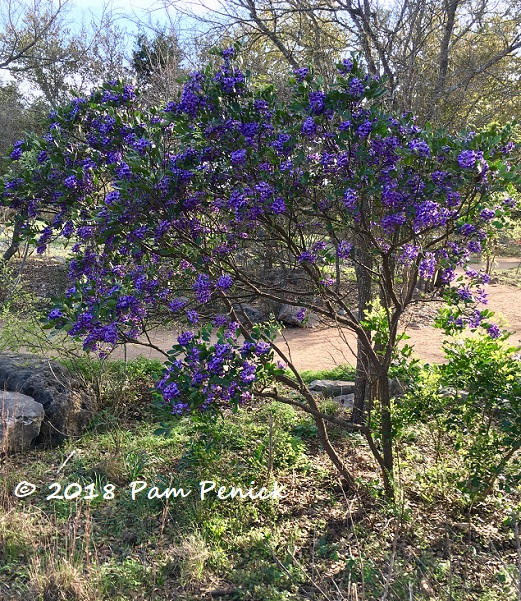
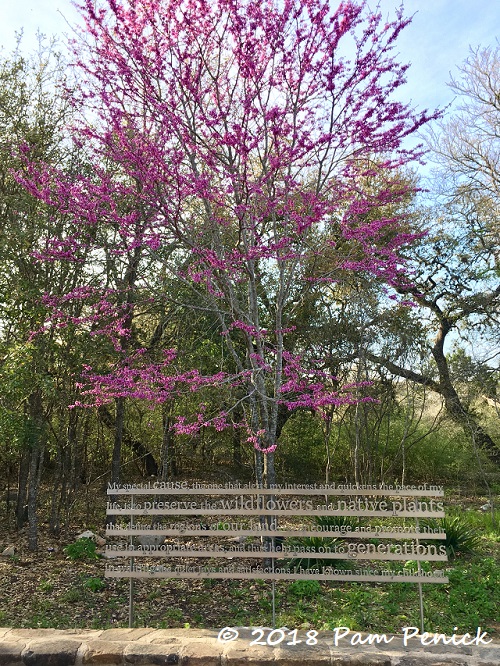
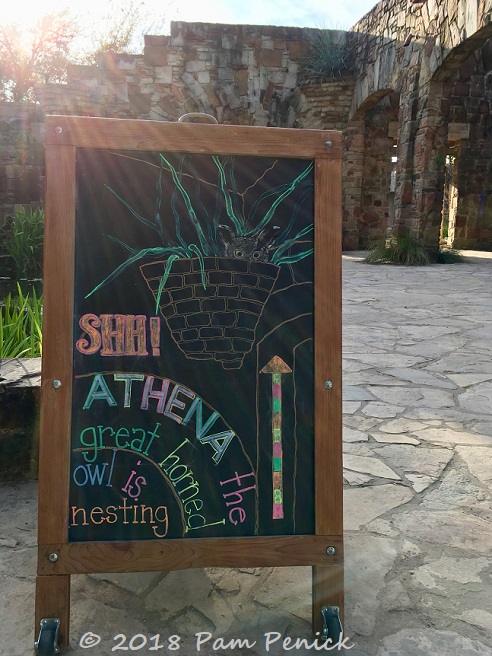
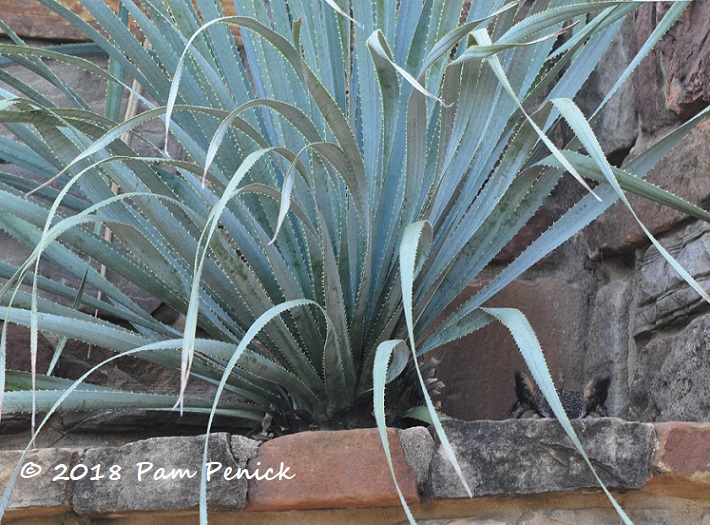
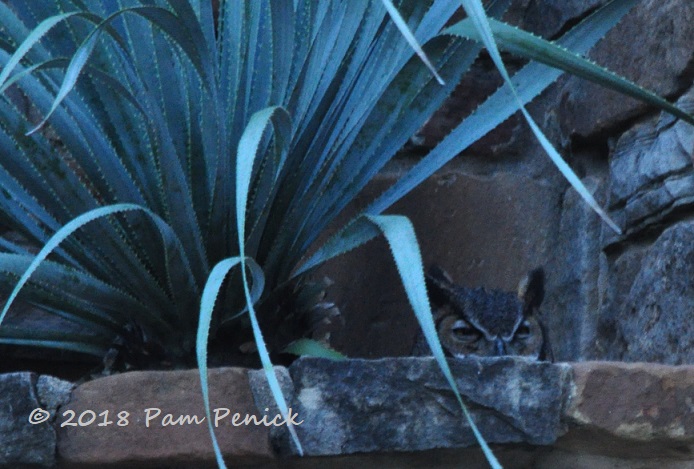
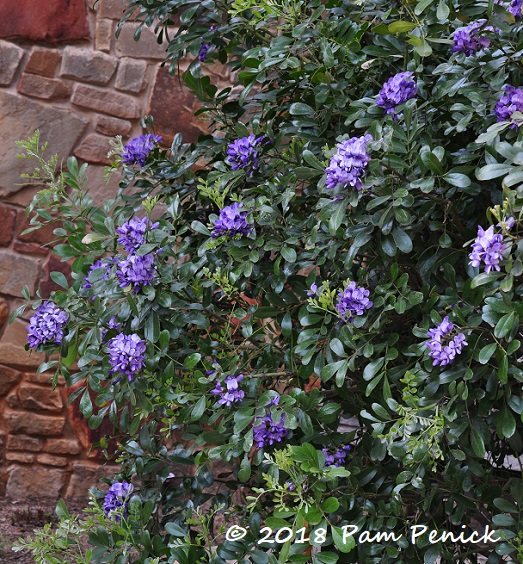
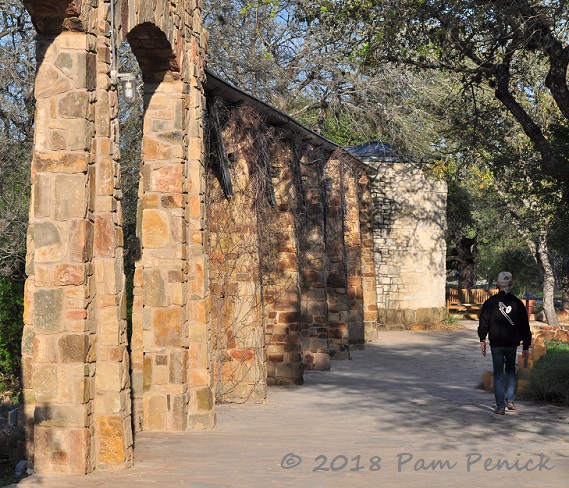
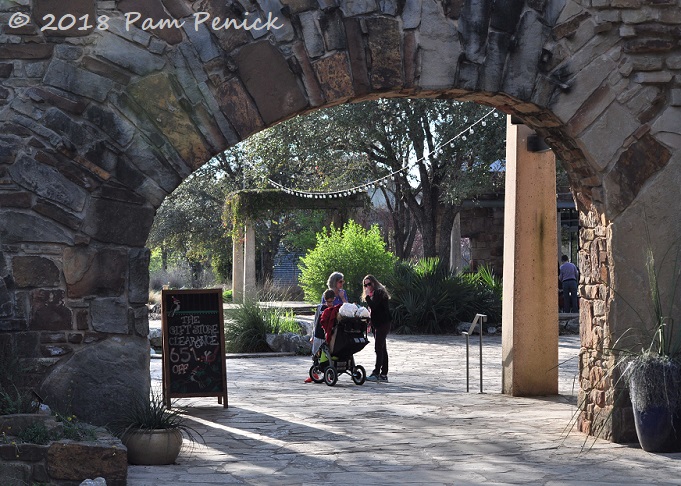
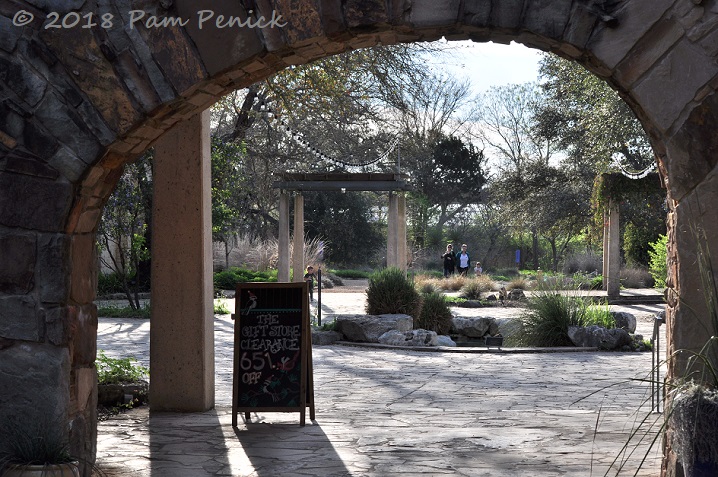
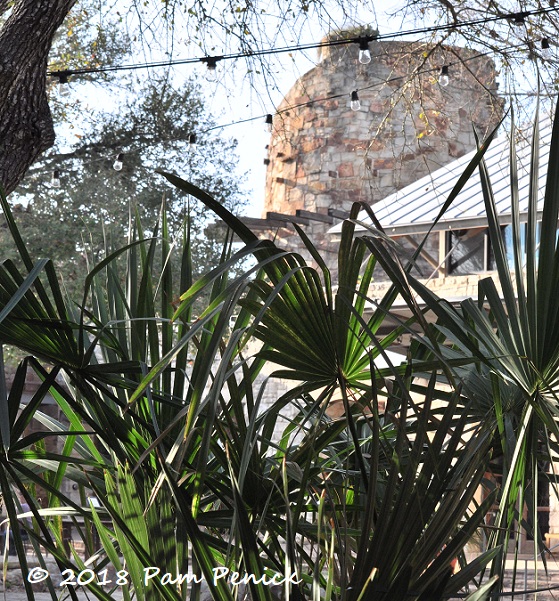
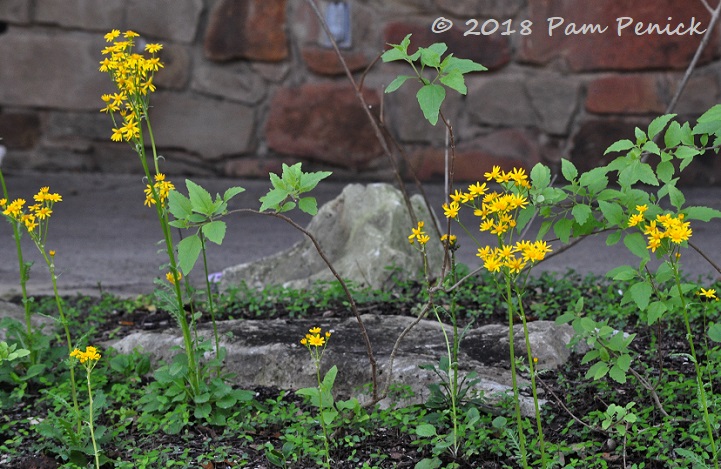
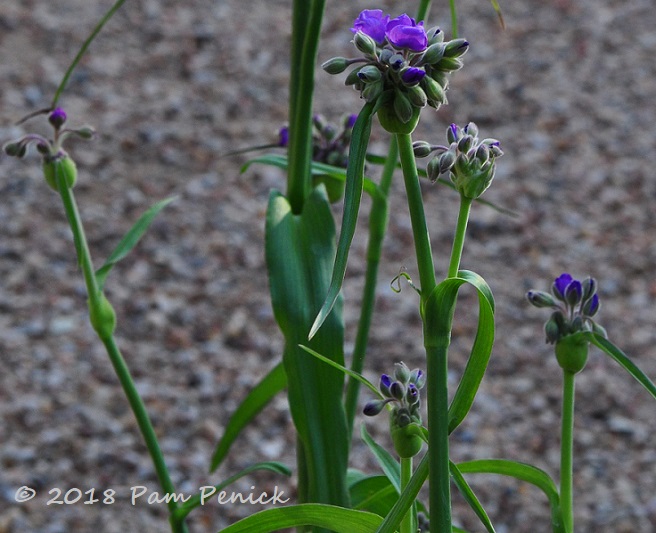
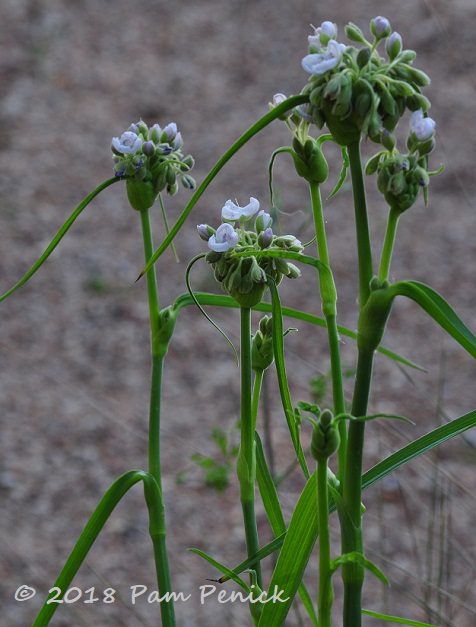
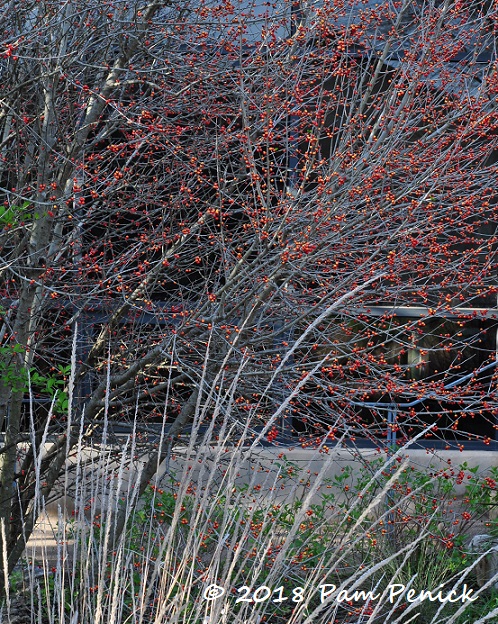
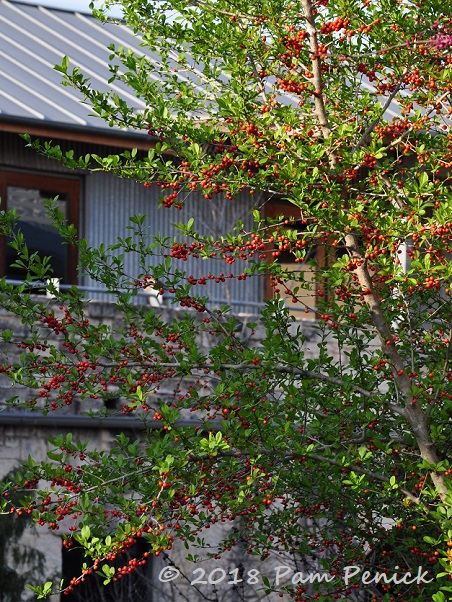
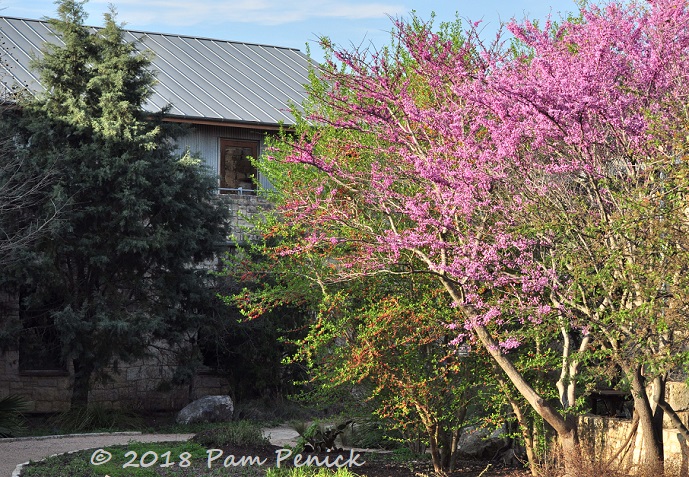
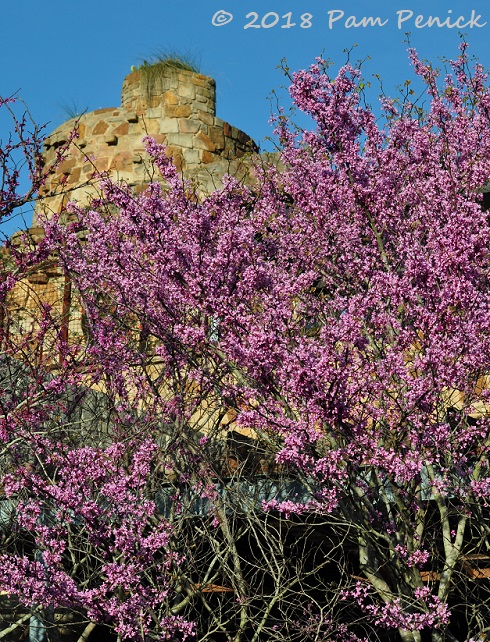
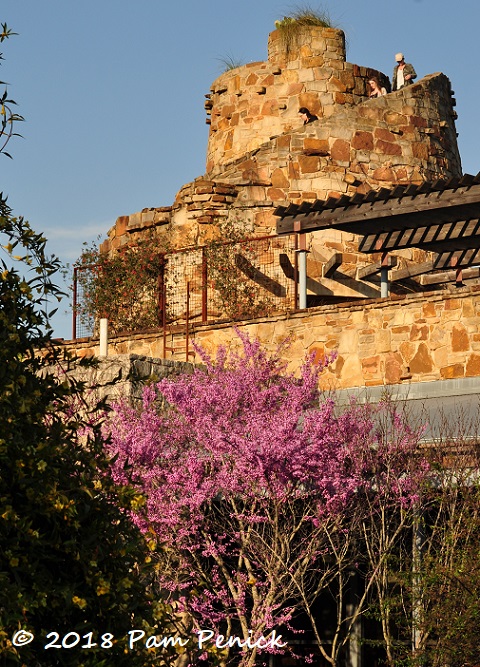
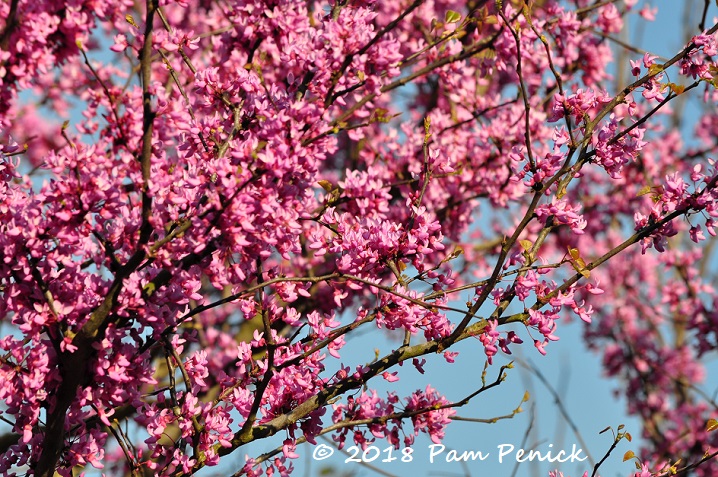
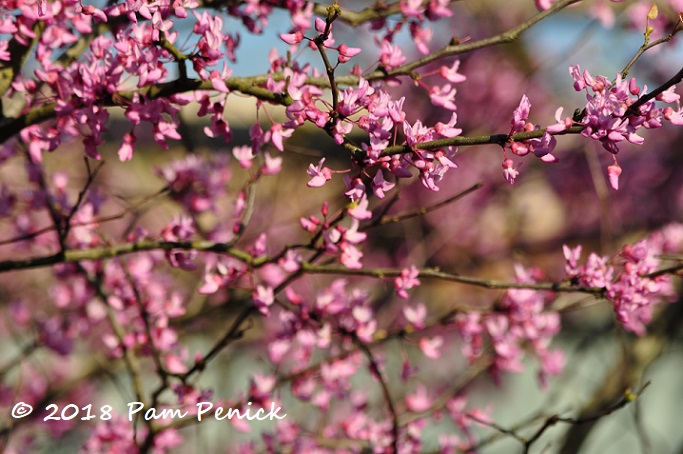
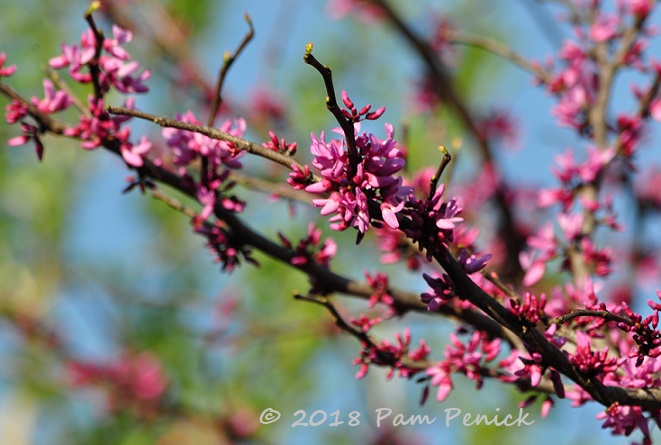
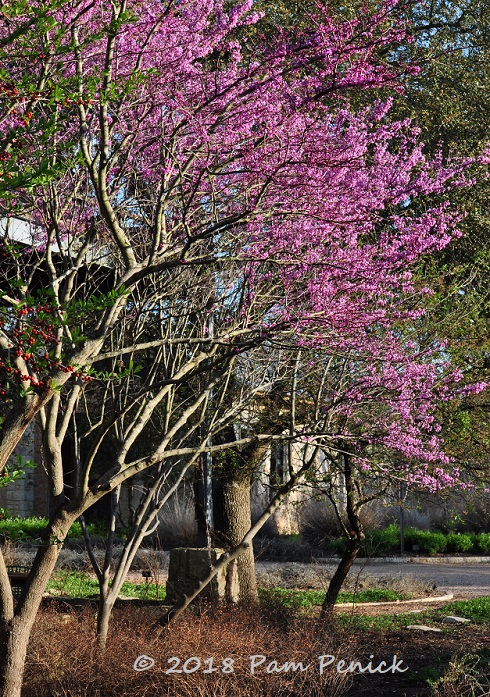
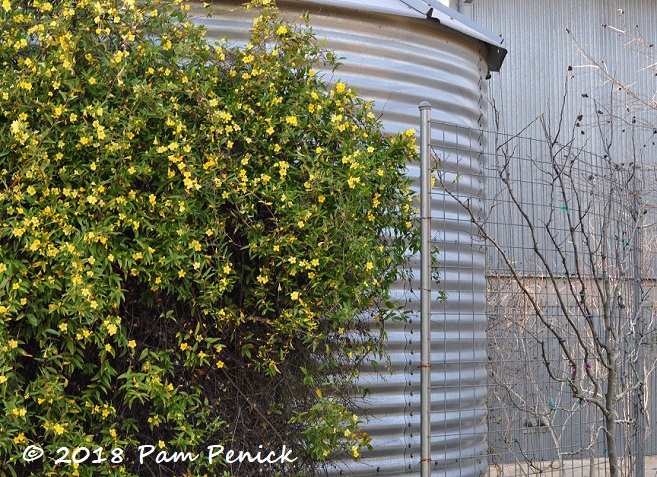
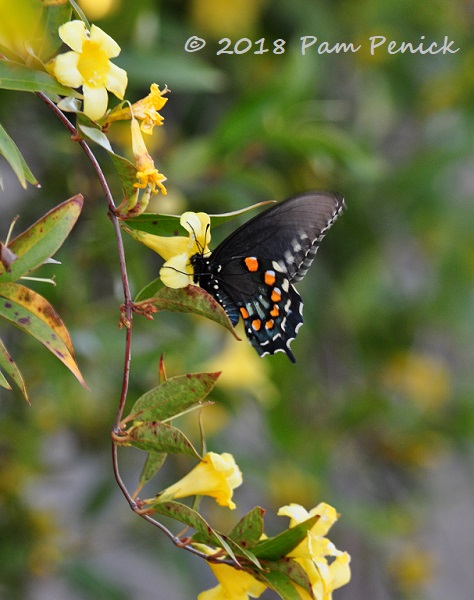
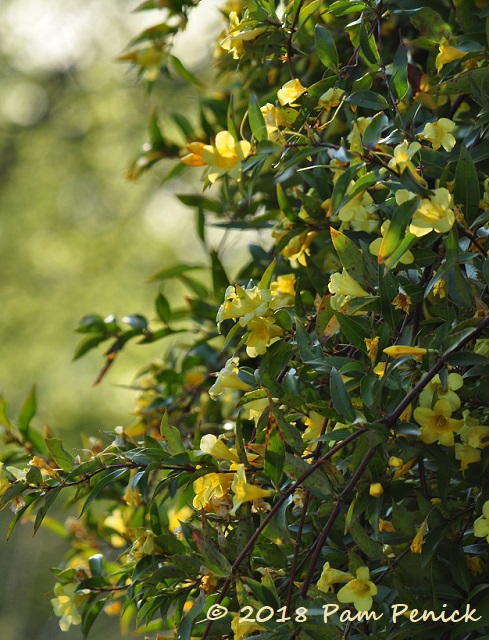
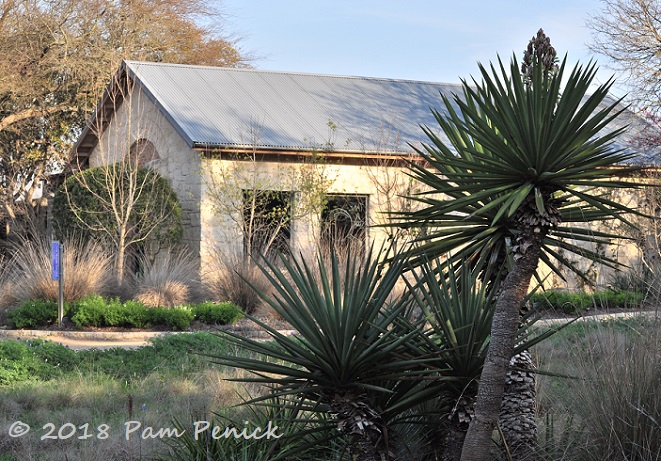
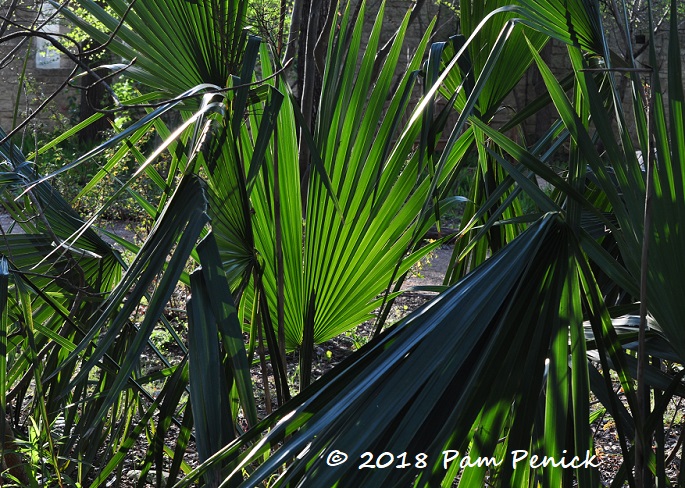
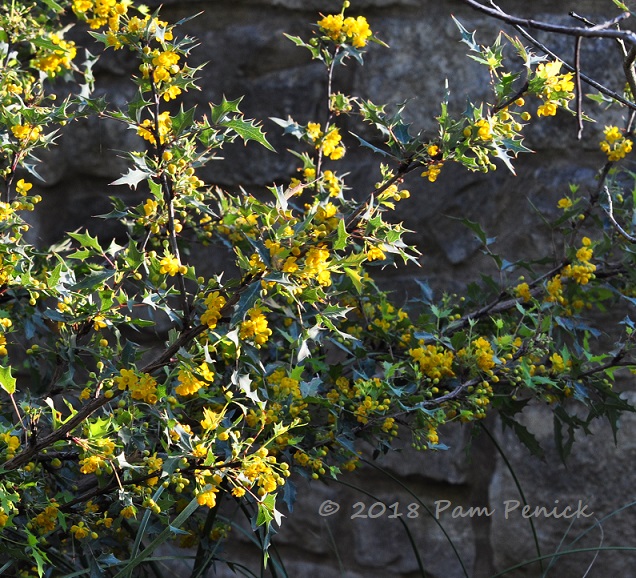
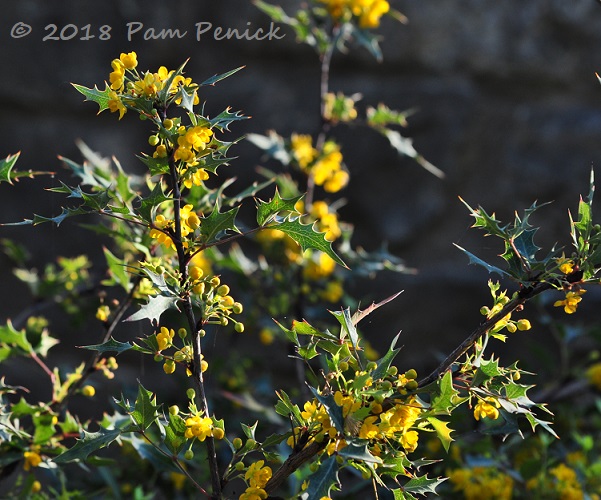
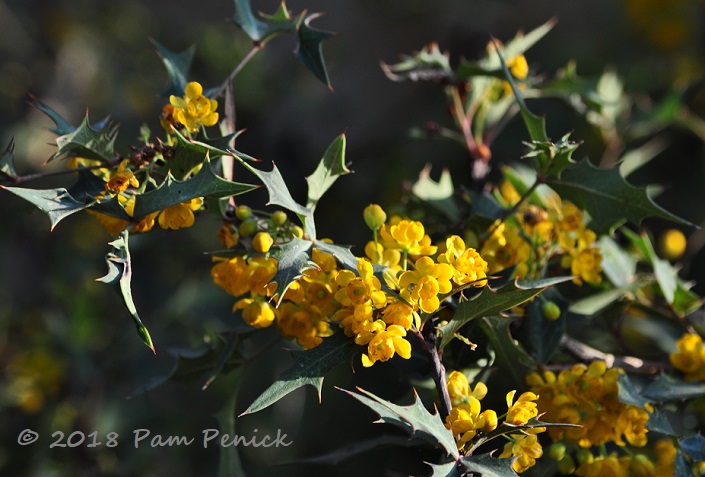
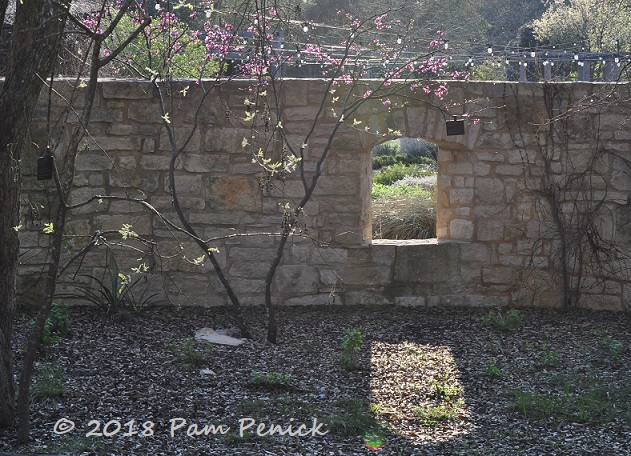
We have the Mahonia trifoliolata growing in the wild area of our back yard and flowers smell amazing for about a month. Sometimes I can smell it from 20 yards away, but they are big, dense plants. It looks like trifoliolata have 3 leaflets and swaseyi would have 5 or more leaflets. The shadows make it hard to tell, but it does look like 3 leaflets in the pictures.
The mahonia flowers smell like honey, I think. Am I remembering right? Thanks for the distinction between the trifoliolata and the swaseyi. —Pam
A newbie to learning about Texas natives, I discovered a patch of argarita growing on the wild edge of our lot. Your pictures really show their beauty. I hadn’t noticed a scent so I’ll have to go investigate.
It’s a lovely native shrub — like a holly in many ways. I had one in my former garden, and I keep meaning to find a place for one in my current garden. —Pam
Beautiful photography and informative in a creative way, as usual. I thought I was seeing 5 leaflets in your close up, so that would be the easiest way to distinguish it as swaseyi. Not sure I’ve ever seen swaseyi(Texas Mahonia) because I didn’t know the difference between it and agarita (trifoliolata) until your question–so had to look it up! Learned something again.
I didn’t either, Beverly. Learning something new every day! —Pam
Your blooming trees are spectacular but the view of Athena is priceless. Spring is busting out here too. I also spent some time at my local botanic garden yesterday (ahead of another rainstorm) documenting blooms.
I’m glad to hear you’re getting rain in Southern CA, Kris. We could use some too, but I’m loving our spring weather. —Pam
That is a garden I yearn to see. Thank you for fresh posts.
How I wish you could join us for Garden Bloggers Fling this May, Diana! We’ll be visiting the Wildflower Center and many other wonderful private gardens. —Pam
What made the aqueduct need rebuilding? Stone’s a pretty daunting medium for repair or renovation, but so so wonderful otherwise.
This is one of the two gardens* I’m determined to visit before my time runs out, and your captivating photos keep that flame burning strong. Looking forward to the other side of that wall!
*Mt. Cuba, in Delaware.
I didn’t get the details on the aqueduct rebuild, Nell, but I recall hearing that there was crumbling mortar up top. They didn’t have to redo the whole thing, just one section. I hope you’re able to visit the garden someday! April to early June and October through late November are my favorite seasons. —Pam
The Texas Native Plants book shows Mahonia swazeyi with a common name of Texas Barberry (ea leaf 5-9 leaflets). Right beside that picture it shows Mahonia trifoliata with common name of Agarito, Algerita (ea leaf 3 leaflets). Both of these look really nice and the Agarito shows it in fruit from May to July (pretty red balls).
Thanks, Pamela. I’ve always called it agarita — one of those common-name quirks, I guess. It is a pretty shrub, especially in flower or fruit. —Pam
Correction: Mahonia trifoliolata
I can see that it is truly spring when we get to see Athena in her magnificent nesting site and seeing the blooms at the Wildflower Center. I can almost smell the Kool Aid.
I hope to be back soon to get pics of Athena’s chicks. And I’ll have pics of some owls in my own garden soon. —Pam
Two comments I just found on the Wildflower Center website:
1) From “Ask Mr Smarty Plants”:
“Central Texas also is home to two kinds of barberry that are very tasty: Agarita (Mahonia trifoliolata) and Texas Barberry (Mahonia swaseyi). Agarita is very common in Austin. You’ll see prickly, holly-looking bushes of it in local parks and older neighborhoods. Its berries used to be prized for jellies and desserts, and you can still occasionally find Agarita jelly in stores. The berries are also delicious straight off the bush in late spring, though they are so acidic that it’s best not to eat too many. The closely related Texas Barberry is limited only to a few counties in central Texas and I’ve never seen jelly made from it, but I have tried the berries and in my opinion they are sweeter than Agarita. However, access to them will be very limited.)”
2) From the Plant Database:
Mahonia swaseyi (Texas Barberry): “Endemic to the Hill Country in many settings. Has many attributes of the more familiar Agarita (Mahonia trifoliolata) with a larger longer leaf but similar look.”
Thanks for highlighting this plant & its similarity to the Agarita/Agarito! I wasn’t familiar with it before seeing it here & have enjoyed learning more about it. I love your website!